Whether you want to install a new chimney flashing or you want to reseal an existing one, sealing it can be a tedious job. That's why we researched how to seal a chimney flashing, and here is a step-by-step guide we came up with based on the data we gathered.
You can follow this guide on how to seal a chimney flashing:
- Set up the necessary materials, tools, and safety equipment you need for the job. You'll also want to do it on a clear day, so you have to look ahead at the weather forecast.
- If you are reapplying, make sure that you stripped off the old sealant. Make sure that you get a good view of the flashing.
- Before applying any caulk or flashing cement, ensure that the flashing is secure and that none of the pieces are loose.
- Tap any loose pieces back into place with your hammer, be cautious not to hit too hard; after all, it is only sheet metal.
- Apply the silicone caulk once each piece of flashing is as secure as it can be. You want to stuff it into every nook and cranny you can find. Apply a coating to the border of each flashing piece. You can't use too much, so stuff as much as you can.
- Let the caulk sit and give it a little time to dry.
- Apply the flashing cement using the masonry trowel once the caulk has cured sufficiently on the surface to keep some rigidity.
Let's now discuss what are the materials and tools you need to complete this task. We'll also cover the importance and benefits of sealing the chimney flashing. In addition, we'll tackle what the best sealants to use are. Keep reading!
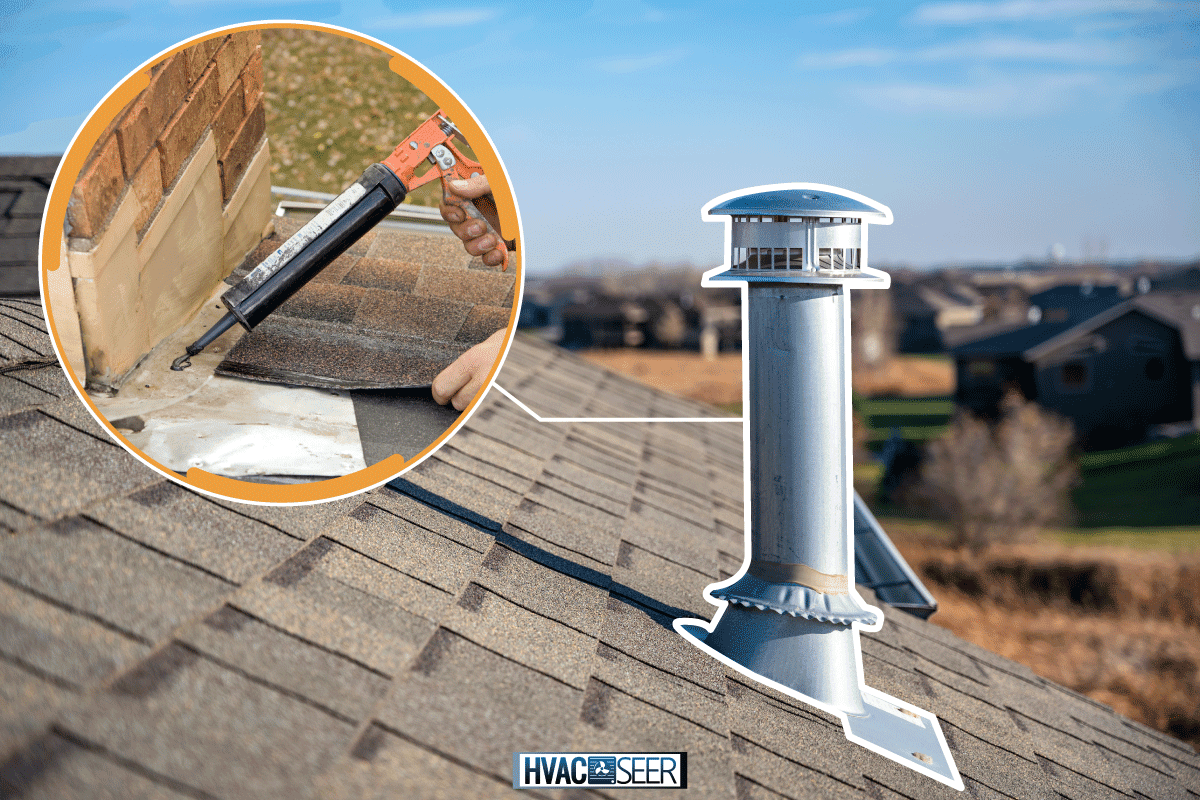
What Are The Materials And Tool Needed To Seal A Chimney Flashing?
Before starting your sealing job, you must first gather and prepare these tools and materials:
- A hammer
- Caulk gun
- Silicone Caulk
- Masonry Trowel
- Flashing Cement
- Ladder
- Safety Harness
- Lanyard
- Dust Masks
- Hand Gloves
- Goggles
- Rope
- Roof Anchor
You can put all materials and hand tools in a toolbox kit to avoid going up and down from the roof.
Why The Need To Seal Chimney Flashing?
Chimney flashing contributes to forming a waterproof seal, which protects both your chimney and your roof from water damage. It works similarly to how weather stripping prevents wind and other undesired natural factors from entering your home.
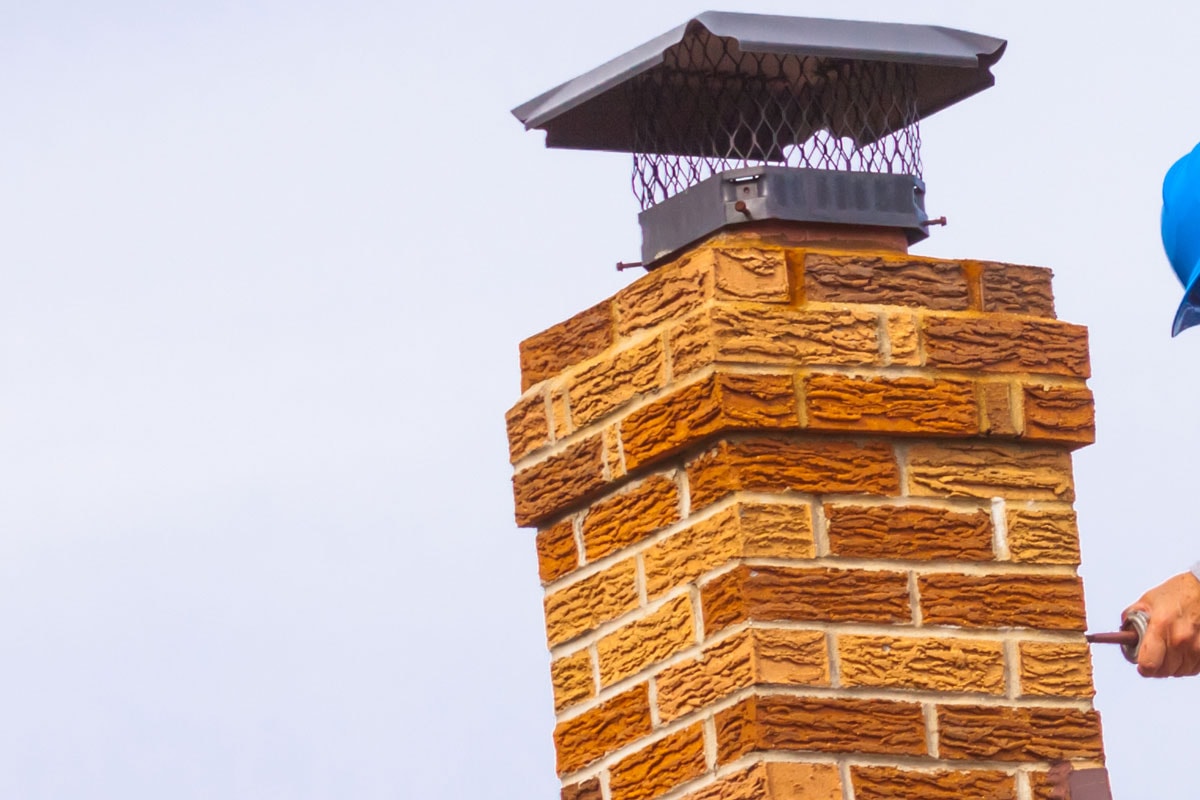
What Is The Importance Of Having A Chimney Flashing?
To protect the property, chimney flashing must be done correctly by building and plumbing code standards.
Here are some reasons why it is important to have a chimney flashing:
- Debris, water, dust, and other foreign particles will travel through the roof cavity without chimney flashing and may cause internal damage, including electrical failures.
- The thermal efficiency of the property will be reduced if chimney flashing is not installed. Even with insulation, uncovered holes in the roof line might let heat escape, making indoor temperature control difficult.
- Chimney flashing creates a barrier that prevents pests from entering your roof hollow. If your property includes possums, rats, or other terrible pests, make sure your roof is sealed so they don't create a home inside your roof space.
- Correctly placed chimney flashings will aid in the upkeep of the house. When installed correctly by a licensed plumber, chimney flashings rarely need to be maintained. If you live in an area where large trees drop leaves and twigs, you may only need to clean around the chimney.
What Is Chimney Flashing Made From?
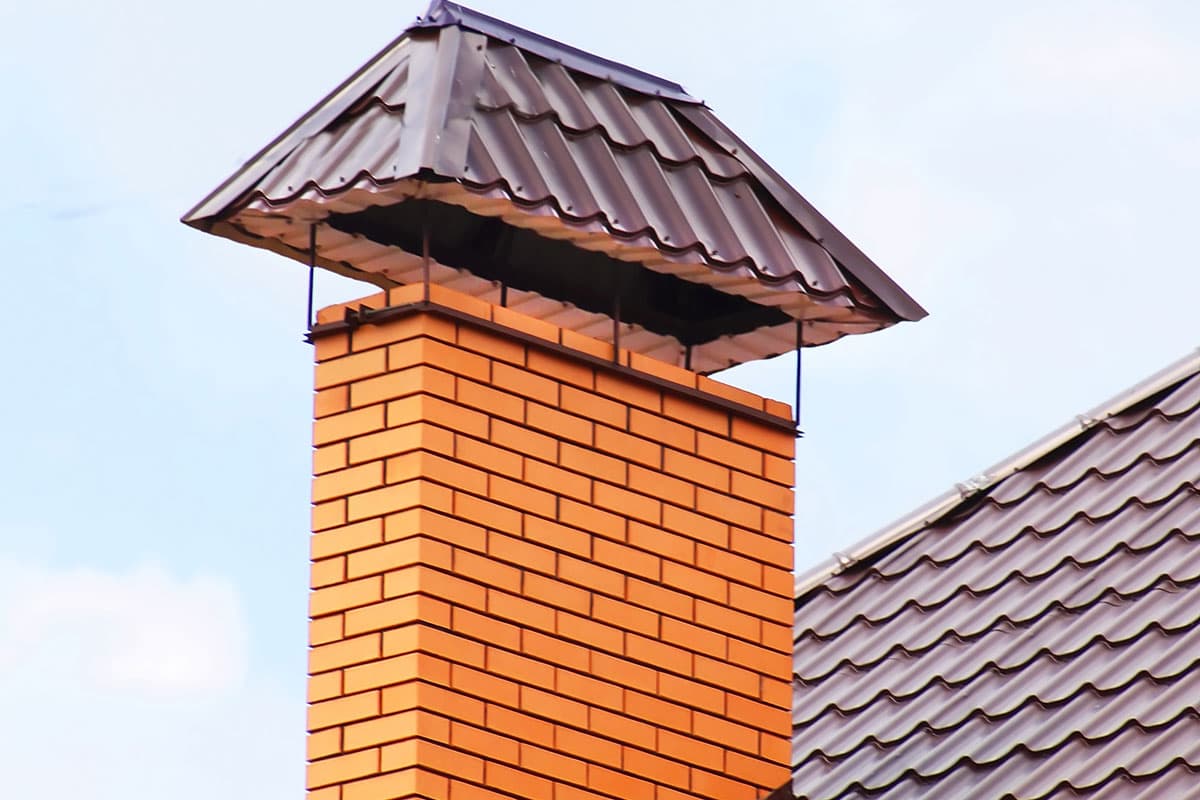
Chimney flashing is made up of three major parts:
- Step Flashing
- Counter Flashing
- Base Flashing
Step Flashing
This is an L-shaped metal plate that is fitted beneath the roof shingles and along with the stonework of your chimney.
Counter Flashing
This L-shaped piece, also known as cap flashing, covers the step flashing and is implanted into a groove cut into the chimney. This is usually the section that can be seen from the ground.
Base Flashing
This part is installed between the roofing surface and the vertical surface of your chimney. It aids in the prevention of water penetration.
Together with caulk, these components form a waterproof seal that, when correctly built, can last up to 30 years. Flashing is one of the most difficult aspects of a roofing installation and demands a high level of expertise.
If it is not properly installed, you will most likely have trouble in the future. Leaks can occur when one or more of these components fail. Over time, these leaks can cause substantial damage to the interior of your home.
What Are The Types Of Chimney Flashing Sealants?
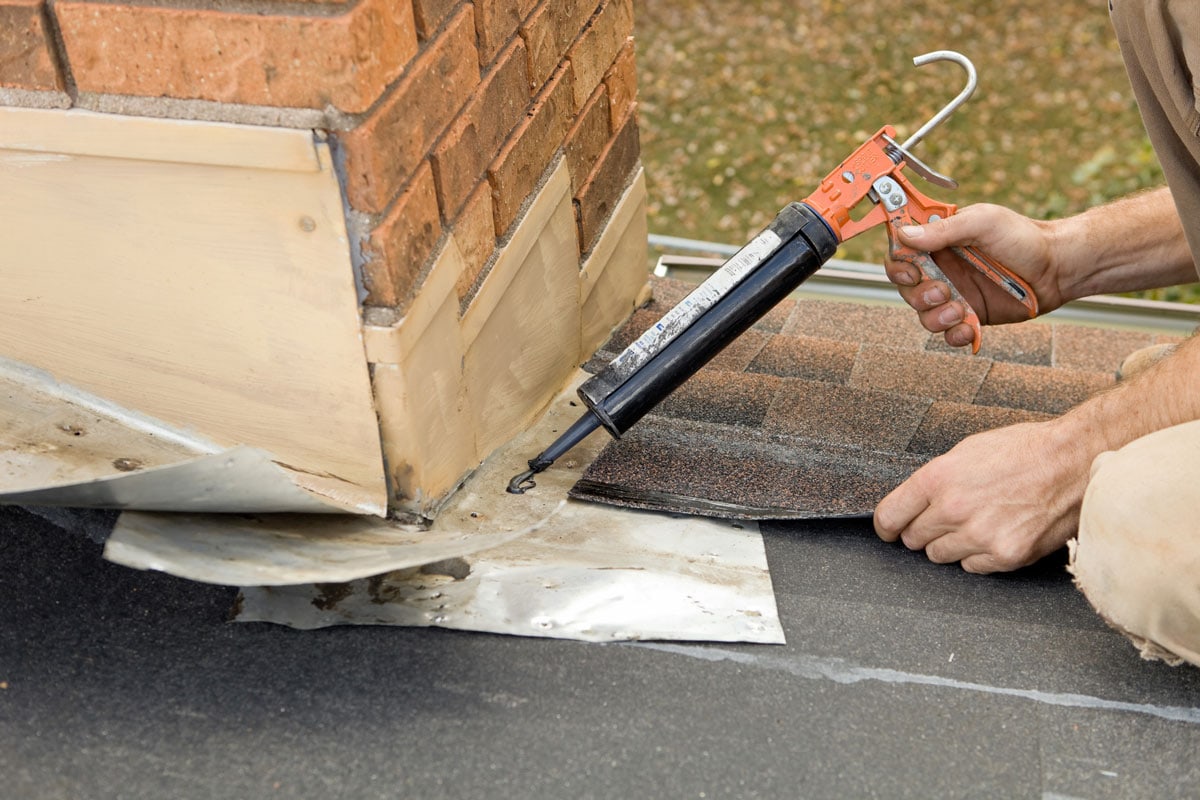
There are four main categories of chimney sealants:
- Mastic
- Polyurethane Caulk
- High-Temperature Caulking
- Liquid Flashing Seal
Mastic
The sticky, sloppy nature of mastic makes up for its messiness in terms of longevity.
Polyurethane Caulk
The most common kind of caulk, polyurethane, makes an airtight seal.
High-Temperature Caulking
Metal chimneys and ovens are caulked with high-temperature caulking, which can withstand heat up to 500 ºF but becomes brittle in cold weather and cracks when the temperature drops below freezing.
Liquid Flashing Seal
Although it makes less mess than caulk or mortar mixtures, liquid flashing cannot be used to seal around bricks already sealed with another sealant.
What Are The Advantages Of Using Chimney Flashing Sealers?
There are several advantages when considering getting a chimney flashing sealer. Among the main factors influencing people's decisions to purchase this product are:
- They boost your home's efficiency.
- The fact that they facilitate the usage of heat in houses by improving their energy efficiency is arguably one of the largest advantages.
- They enable you to reduce your energy expenses. This is because they make it simpler to use heat in homes, which increases how much of the heating components are used by those who live there.
- Many homeowners discover that using sealers truly improves the comfort of their house.
What Are The Best Chimney Flashing Sealants To Use?
Here are three products you can use to seal the chimney flashing of your home:
FlashSeal Elastomeric Flashing Sealant
Click here for this product on Amazon.
The high-performance roofing sealant of the future. The cutting-edge technology used by ChimneySaver guarantees a flexible, watertight, and long-lasting flashing system. It may be applied to flat roofs, low slope roofs (up to 3"), and vertical surfaces for both new construction and re-roofing projects.
The versatile and user-friendly FlashSeal flashing repair method generates a flexible waterproof membrane once it has dried. It is designed to have long-lasting adherence to brick, metal flashings, asphalt shingles, and other chimney and roofing components.
You can fix leaks around the bases of chimneys, stacks, and vents with FlashSeal. It works well as a sealant around skylights as well.
Chimney Rx Chimney Flashing Sealer
Click here for this product on Amazon.
A 100 percent solids, elastomeric silicone sealant, the Chimney Rx Chimney Flashing Sealer offers superior water tightness and long-term durability.
This product extends its lifespan by decades by simulating the chemical composition of rubber to provide flexibility in both hot and cold weather conditions. Because of its dark hue, it blends in with the roofing material and is barely noticeable.
Since silicone rubber doesn't contain any solvents, there are no dangerous vapors that could harm the environment or your health.
The majority of common roofing materials, concrete masonry units, and stucco are just a few of the substrates that Chimney Rx Chimney Flashing Sealer can be applied on. Other substrates include metal flashing and vinyl siding.
MasonryDefender Chimney Flashing Sealer
Click here for this product on Amazon.
All masonry surfaces, including metal flashing and chimneys, can be coated with MasonryDefender, a spray-on coating. It's the finest method for keeping water out of your house or place of business.
You don't need to worry about using the recipe in cold weather because it will still function during icing conditions. You can treat any masonry surface, whether indoors or outside, with MasonryDefender, which is a very simple product to use. It is non-toxic and secure for the environment, kids, animals, and plants.
Chimney Flashing Sealing Safety Tips

If you want to seal the chimney flashing yourself, you must keep in mind these safety tips to avoid any accidents while you do the job:
- Make sure the ladder you're using can extend to the roof. Keep in mind that you should not be at a height below this one for your safety.
- If at all possible, avoid working by yourself. If something goes wrong, call for assistance and avoid using ladders or scaffolds unless they were made specifically for this application.
- Before you do anything else, make sure the area around your chimney has been thoroughly cleaned. This will lessen any risks of slippery hazards or falling objects, which could harm you or other people in an accident.
- It is advisable to put on the necessary safety gear when performing any house maintenance, cleaning, or other tasks that could endanger you or others.
In Closing
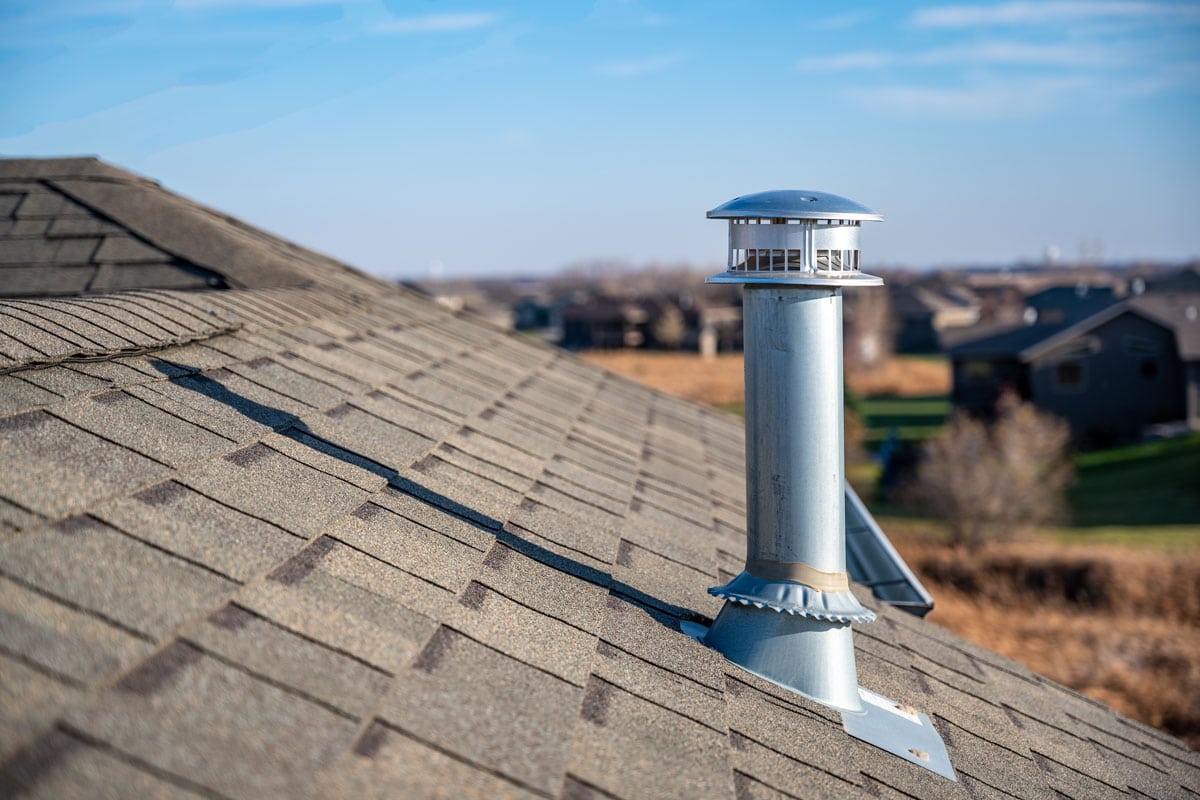
Even though you can DIY the sealing of your chimney flashing, it can be a complicated and dangerous task. That's why it is preferable to let an expert handle the job.
Not only does it make it more convenient for you, but it also keeps you out of harm's way. Remember, your safety should always be your priority.
Before you go, you can check out these articles to know if you need a chimney cap and what is the best type that fits you:



